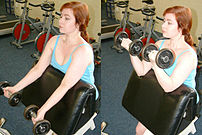Botanical Name :Adenostoma sparsifolium
Family : Rosaceae
Kingdom: Plantae
Division: Magnoliophyta
Class: Magnoliopsida
Order: Rosales
Genus: Adenostoma
Species: A. sparsifolium
Common Name: Red shank, Ribbon bush,Ribbonwood
Habitat: South-western N. America – Southern California. Grows in chapparal at elevations of 300 – 2500 metres[
Description:
Adenostoma sparsifolium is an evergreen Shrub growing to 6m.It is a multi-trunked tree or shrub native to dry slopes or chaparral of Southern California and northern Baja California. Shaggy falling shanks or ribbons of bark are one of the strongest characteristics of the tree, hence the common names. Redshanks are closely related to the more abundant Chamise (Adenostoma fasciculatum).
You may click to see the picturs..
It is an annual to tree.
Leaves simple to pinnately to palmately compound, generally alternate; stipules free to fused, persistent to deciduous
Inflorescence: cyme, raceme, panicle, or flowers solitary.
Red shanks grows from the San Luis Obispo/Santa Barbara County line south in chaparral, down through the L.A. basin in coastal sage scrub and up on the edge of the pine forests in many areas like Mountain Center and Wheeler Springs.. It looks something like a tamarisk in fruit and flower. In the upper Malibu area the frequent fires and post-fire seeding of grasses have destroyed most of the plants. Red Shanks makes the area look like something from a James Bond movie shot in Africa or Captain Kirk on an alien planet, or Korea if you watch a MASH rerun. If pruned a little and opened up it makes a very dramatic small tree. Weird that it is not as wide ranging as it’s cousin Chamise, but it is as easy to grow and very tolerant of most garden conditions.
Flower generally bisexual, radial; hypanthium free or fused to ovary, saucer- to funnel-shaped, often with bractlets alternate with sepals; sepals generally 5; petals generally 5, free; stamens (0)5–many, pistils (0)1–many, simple or compound; ovary superior to inferior, styles 1–5
Fruit: achene, follicle, drupe, pome, or blackberry- to raspberry-like
Seeds generally 1–5
It is hardy to zone 8. It is in leaf all year, in flower from May to June. The flowers are hermaphrodite (have both male and female organs) and are pollinated by Insects.
The plant prefers light (sandy), medium (loamy) and heavy (clay) soils, requires well-drained soil and can grow in nutritionally poor soil. The plant prefers acid, neutral and basic (alkaline) soils. It cannot grow in the shade. It requires dry or moist soil and can tolerate drought.
Cultivation :-
Requires a sheltered sunny position in a well-drained soil and protection from cold winds. Plants are not very hardy in Britain and do not withstand exposure to prolonged winter frosts though they succeed outdoors in the milder areas of the country. In colder areas they are best grown against a south or south-west facing wall. The leaves are resinous and catch fire easily. They have a pleasant aroma.
Propagation:-
Seed – we have no information for this species but suggest sowing the seed in a greenhouse in early spring. When large enough to handle, prick the seedlings out into individual pots and grow the plants on for at least their first winter in a greenhouse or cold frame, planting them out in late spring or early summer, after the last expected frosts. Cuttings could be tried in August of half-ripe wood, preferably with a heel, in a frame. Layering.
Medicinal Uses:
The plant is cathartic. The plant has been used externally in the treatment of arthritis. An infusion of the leaves has been used in the treatment of colds and chest complaints, and also as a mouth wash to treat toothaches. An infusion of the dried leaves, or the branches, has been used in the treatment of stomach ailments, inducing either bowel movements or vomiting. The crushed twigs have been mixed with oil and used as a salve.
Other Uses
The bark is fibrous and has been stripped off the plants to make women’s skirts. The wood has been used to make fencing posts and as construction material. The wood burns well, giving a high intensity heat.
Disclaimer:The information presented herein is intended for educational purposes only. Individual results may vary, and before using any supplements, it is always advisable to consult with your own health care provider.
Resources:
http://www.pfaf.org/database/plants.php?Adenostoma+sparsifolium
http://plants.usda.gov/java/profile?symbol=ADSP&photoID=adsp_004_ahp.jpg
http://en.wikipedia.org/wiki/Adenostoma_sparsifolium
http://ucjeps.berkeley.edu/cgi-bin/get_JM_treatment.pl?6677,6681,6683
http://www.laspilitas.com/nature-of-california/plants/adenostoma-sparsifolium











![Reblog this post [with Zemanta]](https://i0.wp.com/img.zemanta.com/reblog_e.png?w=580)
















